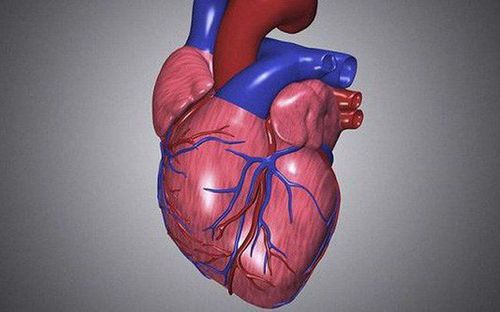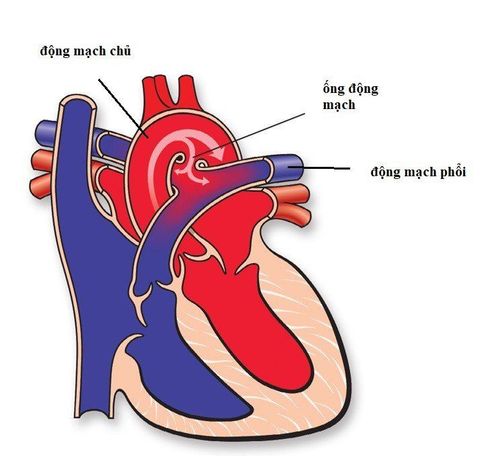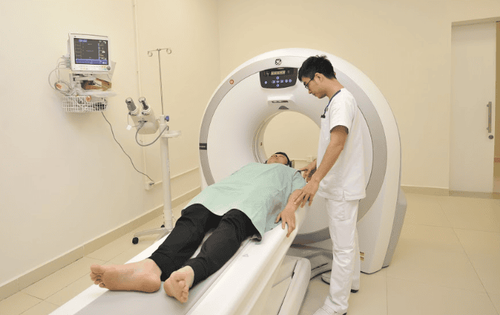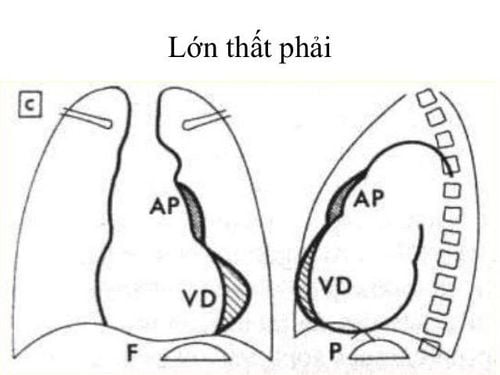This is an automatically translated article.
The article was professionally consulted by Dr. Nguyen Luong Tan - Head of Cardiology Department - Cardiovascular Center - Vinmec Central Park International General Hospital.Not all heart conditions can be operated on. Some cases have to be done right away, some can wait, some can't, some need surgery to correct all congenital heart defects
1. What is a congenital heart defect (CHD)?
Congenital heart defects (CHD), or congenital heart disease, are structural abnormalities of the heart that exist from birth. Signs and symptoms depend on the deformity, symptoms may include rapid breathing, cyanosis, difficulty gaining weight, and feeling tired. Patients with congenital heart disease may have malformations in other organs such as the face, skull, spine, eyes, intestines... or genetic abnormalities of chromosomes and gene mutations. The cause of congenital heart anomalies is often unknown. Certain cases may be caused by infections during pregnancy such as rubella, the use of certain drugs or substances such as alcohol or tobacco, the parent's inbreeding, or the poor nutrition or maternal obesity. Having a parent with congenital heart disease is also a risk factor. Several genetic diseases are associated with heart defects such as Down syndrome, Turner syndrome, and Marfan syndrome. Congenital heart defects are divided into two main groups, cyanotic heart defects and non-violet heart defects, based on whether the patient is capable of turning cyanosis. The abnormalities may be in the inner wall of the heart, the heart valves, or the large blood vessels that carry blood to and from the heart.2. Surgical methods to correct all congenital heart defects
If your baby has a mild congenital heart defect with almost no symptoms, no specific treatment is needed. About a third of babies have mild birth defects, just need to take the medicine under the regular supervision of the doctor. In more severe cases, surgical repair of the entire congenital heart defect may be necessary if a percutaneous catheterization procedure (catheter) is not sufficient to correct the congenital heart defect. Surgeons can perform cardiopulmonary bypass surgery with an artificial heart and lung machine to correct structural abnormalities of the heart and blood vessels such as closing holes in the heart, repairing heart valves, or widening them. blood vessels...The following are common congenital heart defects and their treatment methods are as follows:
2.1. The ductus arteriosus is a blood vessel connecting the aorta and pulmonary artery that exists during fetal life and closes within the first 2 weeks to 1 month after the baby is born. If after the above time, the tube does not close, it is called a ductal malformation. This is a common congenital heart disease, accounting for about 10% of congenital heart diseases. This defect is common in premature babies. It will create abnormal circulation between the macro and microcirculation. Therefore, treatment is needed as soon as possible to avoid serious hemodynamic consequences in the future.
Treatment of ductus arteriosus depends on your baby's age, tube size, and medical condition. In premature babies, doctors can use common anti-inflammatory drugs like ibuprofen or indomethacin early on to close the ductus arteriosus. If medication doesn't work, the doctor will use interventional methods to close the ductus arteriosus or surgically ligation of the ductus arteriosus when the child is older.

Còn ống động mạch là dị tật tim bẩm sinh thường gặp ở trẻ sinh non
Atrial septal defect accounts for 5% to 10% of congenital heart cases. Usually the left atrium and the right atrium are separated by a wall called the atrial septum. If this septum is defective or absent, oxygen-rich blood can flow directly from the left atrium to the right to mix with the hypoxic blood and vice versa. If not treated thoroughly, long-term can lead to overload of the right heart chamber, increase pulmonary arterial pressure and eventually lead to congestive heart failure and irreversible pulmonary capillary damage.
The choice of treatment for a child with a ventricular septal defect or an atrial septal defect depends on the anatomical location and size of the septal defect. For small-sized stomas, treatment may not be necessary, just periodic monitoring. For larger size stomas, it is necessary to close by interventional occlusion or surgical patching of the stoma. If the stoma is closed early, the child will usually recover completely. After that, just follow-up and routine check-ups for about 3 years
2.3. Coarctation of the aorta Coarctation of the aorta is a congenital heart defect in which the position of the aortic isthmus (the junction between the aortic arch and the thoracic aorta) is abnormally narrow, obstructing the arterial blood flow from the aorta. The heart travels to the lower half of the body and causes an increase in blood pressure in the upper half of the body. If diagnosed and treated early, the prognosis is usually good.
The treatment method for coarctation of the aorta is surgical resection of the stenosis and then reattached directly or with an artificial vessel. If the narrow segment is small and short, it is possible to go through the intraarterial route to intervene with balloon angioplasty or stent placement at the location of the isthmus. All patients with untreated mild and moderate coarctal stenosis should undergo long-term follow-up both clinically (left heart failure status, hypertension, inguinal pulse) and subclinical (ultrasound, electrocardiogram) ECG) once a year.
2.4. Tetralogy of Fallot Tetralogy of Fallot is the most common cyanotic congenital heart disease, accounting for 75% of cases of cyanotic congenital heart disease in children over 1 year of age. This malformation includes 4 congenital abnormalities in the heart (tetralogy), which are: ventricular septal defect, pulmonary stenosis, aorta riding on the interventricular septum, right ventricular thickening. These malformations reduce blood to the lungs and bring hypoxic blood to the body, so children have a long-term lack of oxygen, are easily tired and have cyanosis with different degrees since birth. Fallot syndrome can be surgically corrected in the first few months after birth. Medical treatment is only a temporary option while waiting for the right time for surgery. The surgical method applied in this case was open-heart surgery using an artificial heart-lung machine, which achieved good results with a mortality rate of less than 5%. By radical surgery, the heart defects of tetralogy of Fallot were repaired, the children no longer purple, no fatigue on exertion, almost returned to normal life. Surgery is best done between 2 and 3 years of age. Without surgery, only 10% of children live to 20 years old, less than 3% of children live to 40 years old.

Tim bẩm sinh tứ chứng Fallot có thể phẫu thuật ngay trong những tháng đầu sau sinh
2.5. Left ventricular hypoplasia syndrome Left ventricular hypoplasia is a congenital heart defect in which the left ventricular chambers are too small to perform the pumping function of the heart. The baby needs surgery soon, or the baby can die within the first few weeks after birth.
In general, most congenital heart defects are curable with intervention or surgery. Depending on the type of congenital heart defect and the extent of the disease, the time required for surgery varies. There are cases that require surgery very early in the first months after birth, be it total repair surgery or temporary repair surgery.
Cardiovascular Center - Vinmec Central Park International General Hospital (HCMC) performed Resurgery to correct all congenital heart defects with 90% success rate. The strength of surgery to correct all congenital heart defects at Vinmec Central Park is that the patient can perform surgery and relieve pain with ESP technique - a technique of flat anesthesia of the erector vertebral cavity, helping the patient to overcome "Major surgery" gently when there is no pain, can move early, shorten the hospital stay. In addition, Vinmec Central Park Cardiovascular Center is equipped with modern equipment for treatment such as: Maquet's HR20 artificial cardiopulmonary system; Avance CS2 anesthesia machine; GE's R860 ventilator...
The doctor performing the technique is Dr. Nguyen Luong Tan: an expert in adult and pediatric thoracic and cardiovascular surgery. The doctor is well-trained in the country and many centers have the world's leading medical background such as: France, Australia, ... Before being Head of Cardiology Department, Vinmec International General Hospital since October/October/ 2016, Doctor Tan Former Deputy Head of Thoracic Cardiology Department and Former Head of Pediatric Cardiology Department of Hue Central Hospital
To register for a cardiovascular examination at Vinmec Central Park International General Hospital, customers must have You can call Hotline: 0283 6221 166 or register online HERE.
Please dial HOTLINE for more information or register for an appointment HERE. Download MyVinmec app to make appointments faster and to manage your bookings easily.













